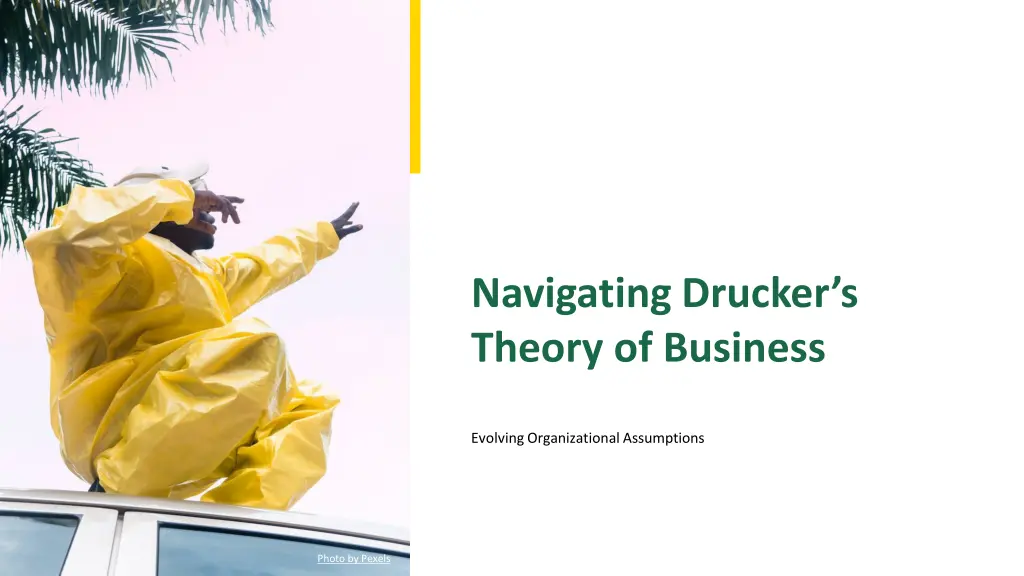
Navigating Drucker's Theory of Business: Understanding, Recognizing, and Reevaluating
Explore Drucker's Theory of Business, focusing on evolving organizational assumptions, recognizing outdated beliefs, steps for reevaluation, and understanding crises beyond management. Learn how continuous reevaluation is crucial for organizational success in dynamic markets.
Download Presentation

Please find below an Image/Link to download the presentation.
The content on the website is provided AS IS for your information and personal use only. It may not be sold, licensed, or shared on other websites without obtaining consent from the author. If you encounter any issues during the download, it is possible that the publisher has removed the file from their server.
You are allowed to download the files provided on this website for personal or commercial use, subject to the condition that they are used lawfully. All files are the property of their respective owners.
The content on the website is provided AS IS for your information and personal use only. It may not be sold, licensed, or shared on other websites without obtaining consent from the author.
E N D
Presentation Transcript
Navigating Druckers Theory of Business Evolving Organizational Assumptions Photo by Pexels
01 Understanding Drucker's Theory Table of Contents 02 Recognizing Outdated Assumptions 03 Steps for Reevaluation 04 Crisis Beyond Management 05 Thank You!
1 Understanding Drucker's Theory Core Concepts Unveiled Peter F. Drucker's 'theory of the business' comprises foundational assumptions about the environment, mission, and core competencies of organizations. These assumptions serve as a hypothesis that must remain aligned with reality throughconstant testing and adjustments. Drucker emphasizes the theory must evolve alongside changing societal, market, customer, and technological landscapes. While some theories may sustain effectiveness over time, they ultimately become outdated, necessitating careful reassessment. Photo by Pexels
2 Recognizing Outdated Assumptions Signs of Obsolescence Organizations can identify outdated assumptions through various indicators reflecting performance and growth. A failure to achieve original objectives is a clear signal that it is time for a thoroughreassessment of the existing theory. Rapid organizational growth may also outpace the existing theory, leading to potential disconnects. Defensive reactions to emerging challenges often signal organizations are operating with obsolete assumptions. Photo by Pexels
3 Steps for Reevaluation Revamping Your Theory Drucker outlines several steps to effectively reevaluate your organization s theory of business for lasting relevance. Preventive care involves systematic monitoring to stay ahead of changes in the external environment. Pay attention to early warning signs that indicate the potential for obsolescence in your assumptions. Engage in external analysis to gain fresh perspectives on market dynamics and customer behavior. Photo by Pexels
4 Crisis Beyond Management Understanding the Roots Drucker asserts that crises often stem from outdated assumptions, not merely from poor management practices. Even if organizations execute tasks effectively, their foundational assumptions may misalign with current market realities. Recognizing this disconnect is crucial for overcoming challenges and steering organizations towards success. It showcases the importance of continuously refreshing your theory of business to stay relevant and effective. Photo by Pexels
5 Thank You! Questions & Dialogue Thank you for engaging with this presentation on Drucker s Theory of the Business . We hope these insights inspire you to rethink your organizational assumptions. Remember, continuous reevaluation is key to thriving in dynamic markets. Feel free to reach out with any questions or thoughts you d like to discuss further! Photo by Pexels
